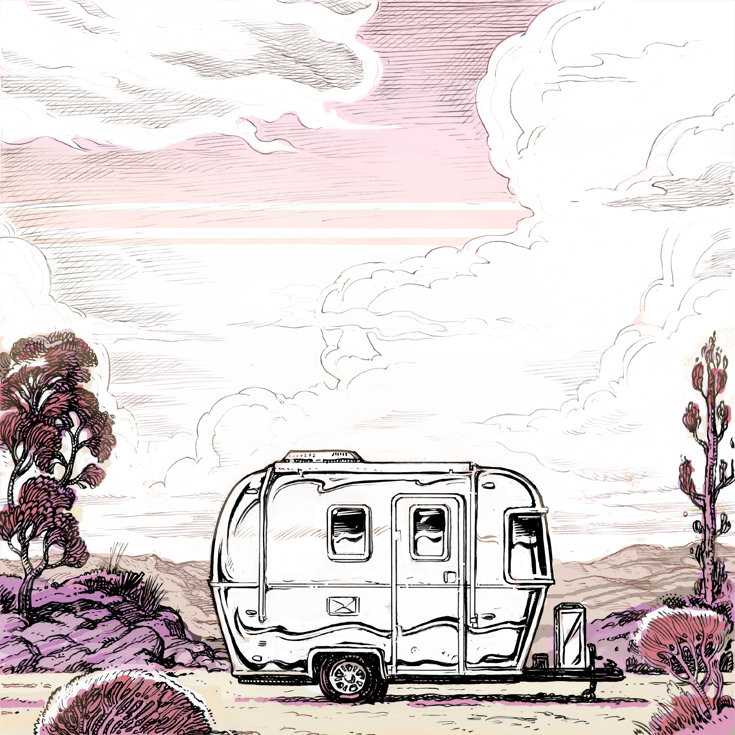6 Simple Tips to Get Into R.V. Travel

Image collected
Recreational-vehicle travel is on the rise and not just with baby boomers. With the growth of peer-to-peer rental companies like RVShare and Outdoorsy, R.V. travel has become more accessible — and more appealing — to vacationers of varying ages and budgets.
Over the last six months, Outdoorsy’s bookings have shot up more than 300 percent among global users, the company said, with half of those users under the age of 40. Similarly, Kampgrounds of America’s latest North American Camping Report noted millennials and Gen Xers now account for 70 percent of R.V. users.
If you’ve never traveled by motor home or R.V., or thought it wasn’t for you, here are a few tips to set the wheels in motion.
Consider the benefits
Freedom, flexibility and an immersion in nature are just a few appealing perks of R.V. travel. Visiting multiple destinations without having to pack and unpack, traveling with a pet, the lure of the open road and kitchens for those with dietary restrictions are also big advantages. Boondocking, or dry camping, lets travelers park almost anywhere without sacrificing comforts like shelter and a bed.
“It’s a happy medium between a hotel and tent camping,” said Jon Gray, RVShare’s chief executive. R.V.s have also become a popular choice for people attending festivals, tailgating at sporting events or staying near family during the holiday season, he added.
Select the right provider
Traditional rental firms offer a service that’s similar to renting a car, while peer-to-peer services are more akin to Airbnb, said Kevin Broom, a spokesman for the RV Industry Association.
“When renting from owners, look closely at the details,” he advised. Take time to read customer reviews, check the age of the vehicle and make sure it’s well maintained.
“Companies like Cruise America, El Monte RV and Apollo tend to have lower insurance deductibles than renting a privately owned vehicle,” said Deborah Trevino, a Virtuoso travel agent, “but rental prices are typically less in the sharing economy because you’re not renting from a franchise.”
For travelers uncomfortable driving larger R. V.s, peer-to-peer rental websites provide search filters for owners who are willing to deliver and set up trailers at a location selected by the renter.
Choose the right vehicle for your trip
Your budget, destination and the number of travelers are the biggest factors in determining what size and model is best for your trip. “A couple visiting several locations and driving lots of miles may want a smaller motor home with better fuel economy,” Mr. Broom said. “A family with children may want a larger R.V. with slide outs and more sleeping areas.”
GoRVing is a website that compares features of various RV types and has a “Find My RV” tool to help select the right fit, while the CompactAppliance website outlines the pros and cons of the different categories. (Most states do not require a special driver’s license for R.V.s.)
Motor homes, or motorized R.V.s, come in three different classes based on size and amenities. Towable R.V.s, such as conventional travel trailers, fifth-wheel trailers, truck campers, folding camping trailers and sport utility R.V.s, require a vehicle to pull them.
If you have the right vehicle to pull it, a towable R.V. is a great option because you have a car for exploring, Mr. Gray said.
“Campervans with four-wheel drive are popular among millennials because they’re ideal for driving in off-grid locations,” said Jeff Cavins, chief executive of Outdoorsy, based on his company’s data. “The Mercedes-Benz Sprinter, Winnebago Revel and the Sportsmobile Classic 4 by 4 are all top sellers.”
Plan your route
“Map out your route in advance,” Ms. Trevino said. “Smaller roads may not be equipped to accommodate heftier R.V.s.” She recommends becoming a Good Sam Club member ($29/year) to access its web-based trip planner, which has helpful filters for low-clearance avoidance and options to bypass highways and tolls.
For a $26.99 yearly subscription, the app CoPilotGPS offers R.V.-specific navigation (trucker maps and R.V.-specific GPS devices provide similar information), while Roadtrippers.com is a free resource for plotting R.V. routes and calculating travel time, mileage and estimated fuel cost.
Reserve and read up before you hit the road
It’s crucial to reserve campgrounds in advance, especially during summer months and other peak travel periods. Websites like Reserve America, Roverpass, Campendium and Recreation.gov provide lists of campsites available across the country.
“We recommend first timers to stay at a fully-loaded R.V. park or campground like Kampgrounds of America and Yogi Bear’s Jellystone Park Camp-Resorts, which offer full hookups, dump stations and staff on site,” Mr. Gray said.
When renting a rig, request detailed instructions from the owner or rental company how to use the R.V.’s systems, including the generator, air-conditioning, leveling, slide outs, electric and entertainment, as well as how to empty waste tanks and refill fresh water.
Typically, the owner or rental company will conduct a walk-through orientation with the vehicle’s renters. Most rental companies offer roadside assistance in their pricing, and extended roadside service, for nonmechanical mishaps like misplacing your keys, is also available.
Make sure to take the vehicle for a test drive to get comfortable turning, parking and towing it.
Pack smart
Some R.V. owners provide free bedding, towels and kitchen essentials, while others offer housekeeping kits and outdoors equipment at a cost; inquire ahead of time. “Many customers opt to have their R. V.s supplied with groceries and camping gear like kayaks, fishing poles and a grill, so all they need to do is arrive with their suitcase,” said Mr. Cavins.
If you’re stocking the vehicle yourself, RV-camping.org provides a helpful checklist, broken down into categories from toiletries and clothing to kitchen supplies and tools. Of course, most items can be purchased on the road if you don’t want to buy them before you leave.
Source: https://www.nytimes.com